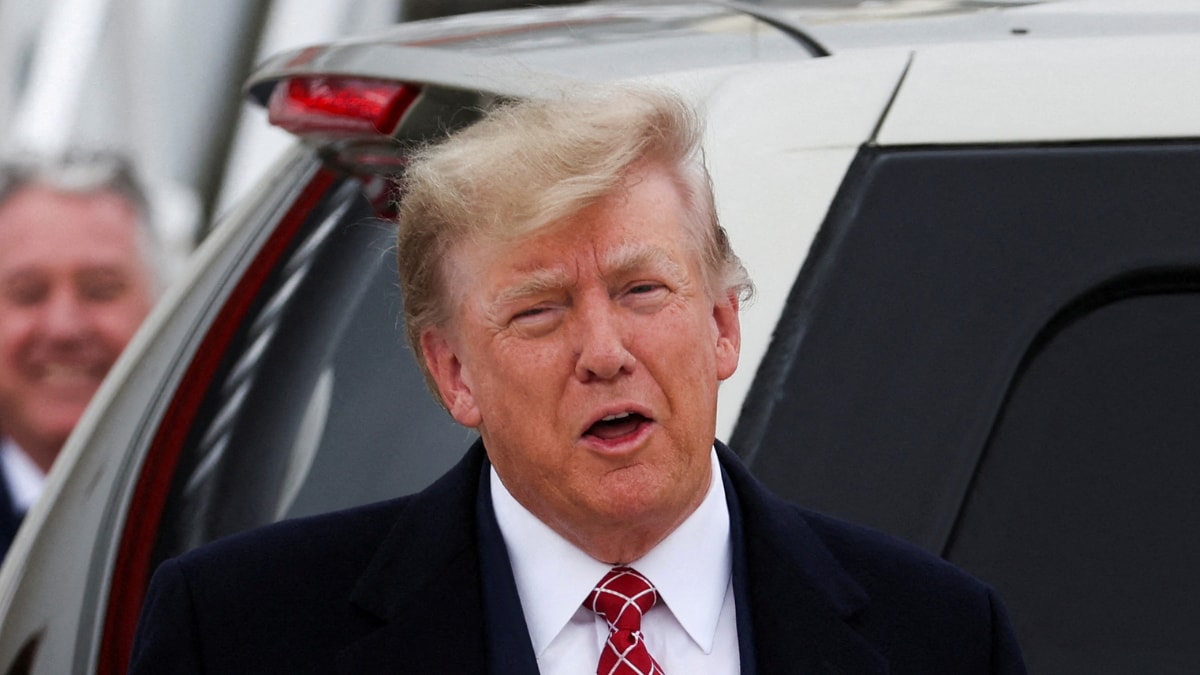Is Trump Kissing Fauci? With Apparently Fake Photos, DeSantis Raises AI Ante
Last Updated: June 09, 2023, 08:15 IST
Washington D.C., United States of America (USA)

Donald Trump is seen hugging Dr Anthony Fauci in an altered photo shared by DeSantis’ rapid response team. (Image: Reuters File)
The pictures from the video criticize Trump for not firing Fauci, the former top US infectious disease official whose push for Covid-19 restrictions turned him into a boogeyman for many conservatives
In one apparently altered image, former US President Donald Trump is seen hugging his bête noire Dr Anthony Fauci, who beams in response. In another, Trump is kissing Fauci on the nose.
These images published by Florida Governor Ron DeSantis’ campaign this week demonstrate how the 2024 Republican White House contenders have elevated their war of words into the AI-driven social media arena, interspersing fact with fiction.
The pictures form part of a video that DeSantis’ rapid response team shared on Twitter. It criticizes Trump for not firing Fauci, the former top US infectious disease official whose push for COVID-19 restrictions turned him into a boogeyman for many conservatives.
Fake images posted by the Desantis campaign used to smear Trumptop left, bottom middle, bottom right
“Real Life Trump”
Complete and utter Biden level scumbaggery pic.twitter.com/z6rH9Fi55Q
— Tim Pool (@Timcast) June 8, 2023
The video includes apparently real footage of Trump at press conferences and interviews. But at the 25-second mark, six images appear of Trump and Fauci – including three showing them hugging or kissing.
Those three images are likely AI-generated, according to an analysis of traces left by synthetic image generators, said Matthew Stamm, a professor of electrical and computer engineering at Drexel University. ”Our results consistently output a decision that these images are fake,” he said.
The video does not disclose any potential AI use and the DeSantis campaign did not respond to a question about whether the images were fake or whether AI was used to create them.
But their appearance in the campaign of a leading candidate shows how the technology is turbocharging its way into the 2024 presidential race as a slew of new ”generative AI” tools make it cheap and easy to create convincing deepfakes.
”It was particularly sneaky to intermix the real and the fake images, as if the presence of the real image is giving more credibility to the other images,” said digital image forensics pioneer Hany Farid, who teaches at the University of California, Berkeley.
A person with knowledge of the DeSantis campaign operation said the Trump side had been ”continuously posting fake images and false talking points to smear the governor.”
Trump, who is currently the frontrunner for the Republican presidential nomination, has indeed used altered images to attack DeSantis, his closest rival.
However, he seems to have primarily shared obviously fake content, for instance an image of DeSantis riding a rhinoceros, a suggestion that the governor is a ”Republican in Name Only” (RINO).
The Trump campaign did not immediately respond to a request for comment. His team on Thursday evening tweeted that the pro-DeSantis camp is ”pretending to not know the difference between memes and the deceitful fake images in the DeSanctimonious ad,” using one of Trump’s nicknames for his rival.
A representative for Dr. Fauci did not immediately respond either.
Drexel professor Stamm’s forensics analysis tool suggests the images were made using an AI model called a diffusion model, which underpin popular AI image generation products like DALL-E and Stability AI.
So far, the only high-profile AI-generated political ad in the U.S. was one published by the Republican National Committee in late April. The 30-second ad, which the RNC disclosed as being entirely generated by AI, used fake images to suggest a cataclysmic scenario should Biden be reelected, with China invading Taiwan and San Francisco being shut down due to crime.
No one is certain where the generative AI road leads or how to effectively guard against its power for mass misinformation, especially as AI improves in quality.
”At some point the AI systems will be outputting images that have no differences from real images,” said James O’Brien, a professor of computer science at the University of California, Berkeley. ”At that point there will be nothing to detect.”
(This story has not been edited by News18 staff and is published from a syndicated news agency feed – Reuters)
For all the latest world News Click Here


